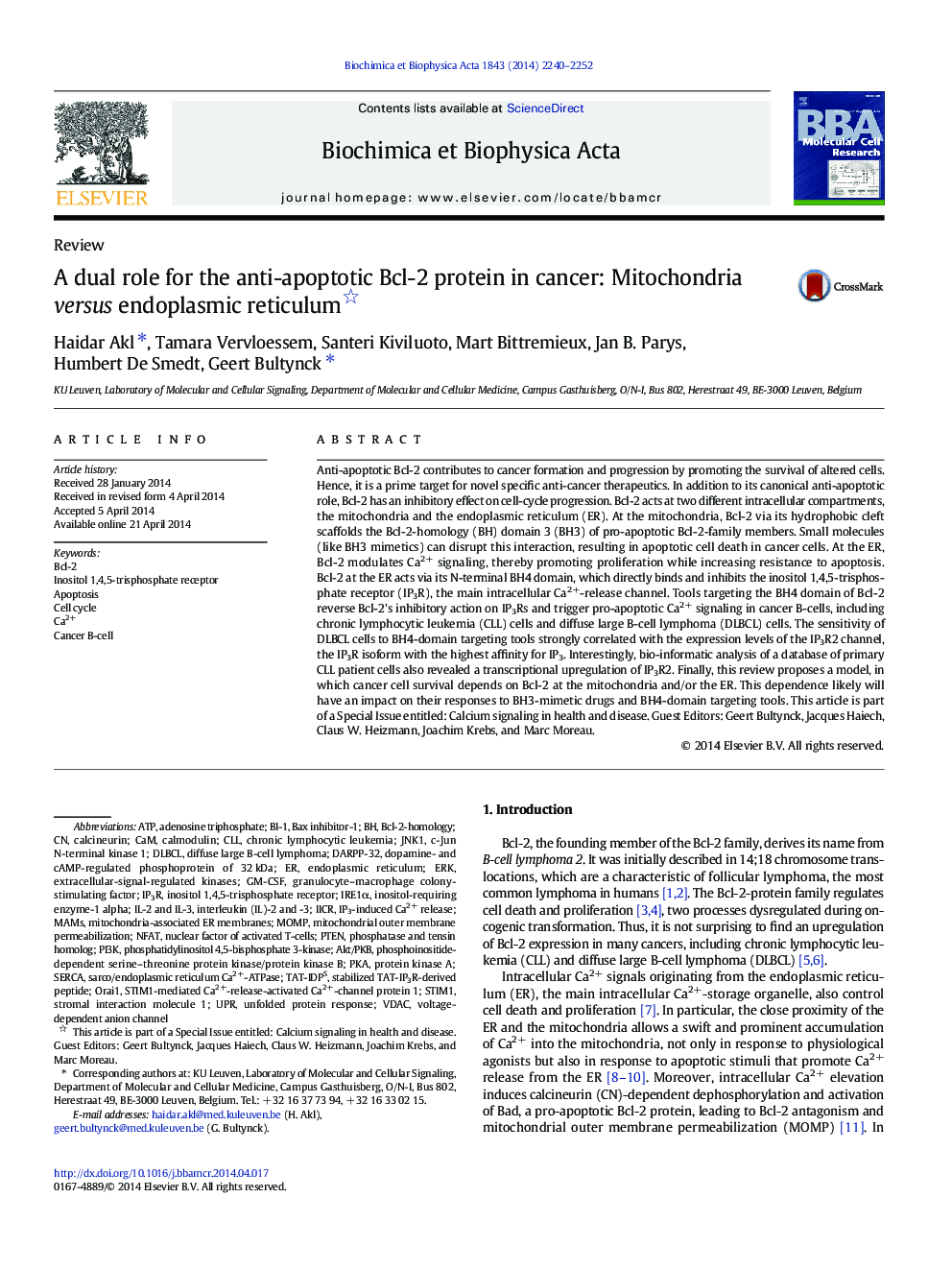| Article ID | Journal | Published Year | Pages | File Type |
|---|---|---|---|---|
| 1950552 | Biochimica et Biophysica Acta (BBA) - Molecular Cell Research | 2014 | 13 Pages |
•Bcl-2 exerts its anti-apoptotic role at the mitochondria and the ER.•At the mitochondria, Bcl-2 scaffolds the pro-apoptotic Bcl-2-family members.•At the ER, via its BH4 domain, Bcl-2 directly binds and inhibits IP3R.•Cancer cells may be addicted to Bcl-2 at the mitochondria or at the ER.•This may correlate with their sensitivity to BH3-mimetics or BH4-domain-targeting tools.
Anti-apoptotic Bcl-2 contributes to cancer formation and progression by promoting the survival of altered cells. Hence, it is a prime target for novel specific anti-cancer therapeutics. In addition to its canonical anti-apoptotic role, Bcl-2 has an inhibitory effect on cell-cycle progression. Bcl-2 acts at two different intracellular compartments, the mitochondria and the endoplasmic reticulum (ER). At the mitochondria, Bcl-2 via its hydrophobic cleft scaffolds the Bcl-2-homology (BH) domain 3 (BH3) of pro-apoptotic Bcl-2-family members. Small molecules (like BH3 mimetics) can disrupt this interaction, resulting in apoptotic cell death in cancer cells. At the ER, Bcl-2 modulates Ca2+ signaling, thereby promoting proliferation while increasing resistance to apoptosis. Bcl-2 at the ER acts via its N-terminal BH4 domain, which directly binds and inhibits the inositol 1,4,5-trisphosphate receptor (IP3R), the main intracellular Ca2+-release channel. Tools targeting the BH4 domain of Bcl-2 reverse Bcl-2's inhibitory action on IP3Rs and trigger pro-apoptotic Ca2+ signaling in cancer B-cells, including chronic lymphocytic leukemia (CLL) cells and diffuse large B-cell lymphoma (DLBCL) cells. The sensitivity of DLBCL cells to BH4-domain targeting tools strongly correlated with the expression levels of the IP3R2 channel, the IP3R isoform with the highest affinity for IP3. Interestingly, bio-informatic analysis of a database of primary CLL patient cells also revealed a transcriptional upregulation of IP3R2. Finally, this review proposes a model, in which cancer cell survival depends on Bcl-2 at the mitochondria and/or the ER. This dependence likely will have an impact on their responses to BH3-mimetic drugs and BH4-domain targeting tools. This article is part of a Special Issue entitled: Calcium signaling in health and disease. Guest Editors: Geert Bultynck, Jacques Haiech, Claus W. Heizmann, Joachim Krebs, and Marc Moreau.
